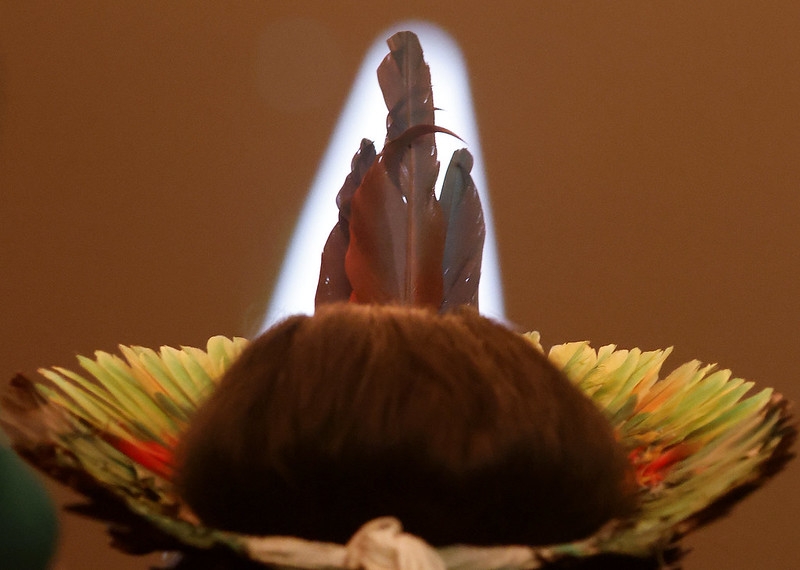- Sikaiana Islanders Face Rising Seas and Uncertain Future |
- BD Election Commission to begin political dialogue this week |
- Climate summit hears countries suffering from global warming |
- How to Visit Saint Martin’s Island in This Tourist Season 2025-26 |
- Khulna-Mongla dream rail line struggles for freight flow |
Indigenous Lands Face Rising Threats, Report Warns

Brazil’s Minister of Indigenous Peoples Sonia Guajajara attends a meeting during the UN Climate Change Conference COP30. Credit: Hermes Caruzo/COP30
A new report by the Global Alliance of Territorial Communities (GATC) and Earth Insight warns that extractive industries, deforestation, and climate change are endangering the world’s remaining intact tropical forests and the Indigenous Peoples who protect them.
The report, Indigenous Territories and Local Communities on the Frontlines, draws on geospatial analysis and community data to show that nearly one billion hectares of forests under Indigenous stewardship are facing expanding industrial pressure. This threatens global climate and biodiversity goals.
Although Indigenous Peoples and local communities represent less than five percent of the world’s population, they safeguard over half of all remaining intact forests and 43 percent of global biodiversity hotspots. Their territories store vast amounts of carbon, regulate ecosystems, and preserve cultural and linguistic heritage.
However, governments and corporations continue to promote resource extraction in these regions, even in the name of the “green transition.” Across the Amazon, Congo Basin, Indonesia, and Mesoamerica, oil, gas, mining, logging, and agribusiness concessions overlap with millions of hectares of ancestral land.
These intrusions have turned many Indigenous territories into “sacrifice zones.” Between 2012 and 2024, 1,692 environmental defenders were killed or disappeared across GATC member countries, with most cases linked to extractive industries and illegal logging. The report calls this violence “the paradox of protection,” where defending nature puts protectors at risk.
Yet the report also highlights powerful examples of resilience.
• In Guatemala’s Maya Biosphere Reserve, Indigenous communities have achieved near-zero deforestation.
• In Colombia, Indigenous Territorial Entities maintain over 99 percent of their forests intact.
• In Indonesia and Panama, Indigenous groups continue to defend and sustainably manage their territories despite mounting pressure.
The report’s release comes ahead of the UN Climate Conference (COP30) and aligns with the 2025 Brazzaville Declaration, which calls for secure land rights, free and informed consent, direct financing to communities, protection of defenders, and recognition of traditional knowledge.
However, the report notes that only 7.6 percent of the USD 1.7 billion pledged at COP26 for forest protection has reached Indigenous communities directly. Without direct funding and strengthened territorial governance, global climate pledges risk remaining symbolic.
Indigenous leaders argue that effective climate action requires recognizing that land protection and cultural survival are inseparable. They emphasize that where Indigenous rights are upheld, forests thrive; where they are denied, environmental destruction follows.

